#trait: shaman
Explore tagged Tumblr posts
Text
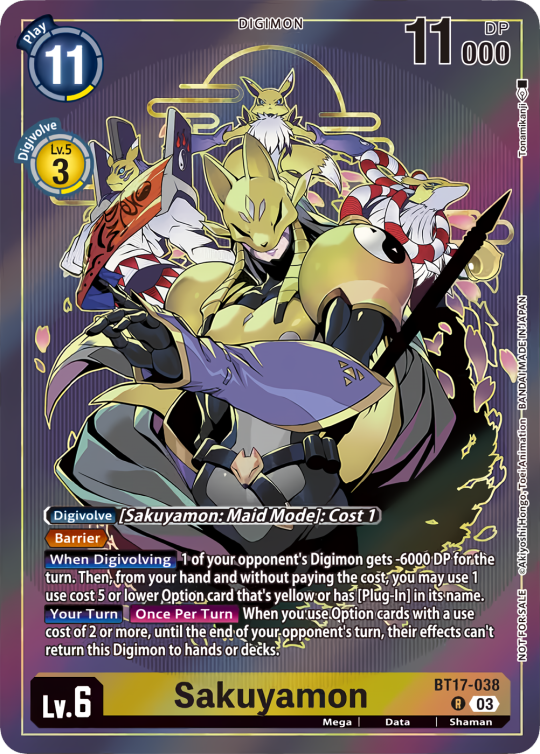
Sakuyamon BT17-038 Alternative Art by Tonamikanji from the Championship 2024 Gold Stamp Card Set
Note: This card is edited and does not exist without a tournament stamp
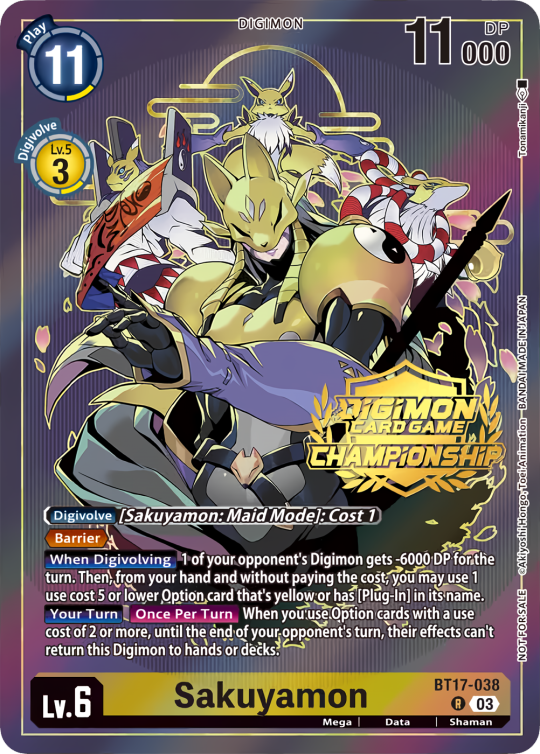
#digimon#digimon tcg#digimon card game#digica#デジカ#digisafe#Sakuyamon#Tonamikanji#AA#BT17#digimon card#color: yellow#type: data#trait: shaman#trait: god man#num: 03#Lv6
158 notes
·
View notes
Note
My first ask not about the goldie fic but I want your opinion: do you think Bill had a crush on the pharaoh? Because he really hypes up how he was obsessed with him, while the evidence shows Amenemhat was one of the least interested humans he partnered with, and he still doesn't seem to harbor much ill will by Bill standards. He also kinda overtly says he tried to flirt with him and that he was thirsty (for friendship). I feel like their relationship was different from most of the others, and is focused on the least.
Also do you think he was into the shaman. Because their non-portal-realated relationship is elaborated on the most and he seems to hold the biggest grudge, but it could've also just been a particular rare respect.
I think Bill has two kinds of crushes.
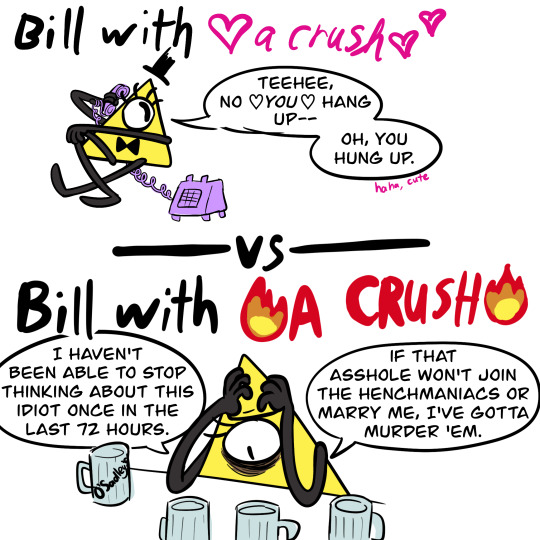
Bill gets 🩷crushes💕 on people that, like, have traits he generally finds attractive, whatever those are. Amenemhat III wore a big hat and built three pyramids, maybe Bill's into that, idk. We don't know much about their dynamic. If things don't work out with these crushes he's like, whatever, he moves on. These crushes are like a game to him.
On the other hand, Bill gets 🔥CRUSHES🔥 on people that make him go "they just like me fr." And here I'm using the word "crushes" to also cover platonic relationships—it doesn't necessarily mean he wants to make out with them, just that somehow he's forged an iron-hard emotional chain with them that he craves to be reciprocated. (the other crushes could also be platonic, but I think they tend to tilt more toward romantic by default.)
Bill strikes me as the kind of guy who goes through life thinking Nobody Could Possibly Get Him so when he runs into the rare person that he does think gets him, he latches onto them like a crocodile onto a baby hippo—and it's just as likely to end either with the prey dead or with the predator getting a few teeth knocked out.
And these are the ones Bill gets bitter and resentful over when things fall apart.
But look at what we know about the shaman: when Bill offered him a way out of his world to explore the secrets of the universe, he jumped at the opportunity; they got intoxicated together; they stargazed together; the shaman taught Bill something he didn't know, which has gotta be rare at a trillion years old.
Ford, obviously, is one of these people to Bill, and the shaman sounds like he's got a lot in common with Ford—curious knowledge-seeker, "the wisest of his tribe." Shaman also sounds like he's got a lot in common with Bill, partying with aliens, enthralled with the stars. I think Bill thought the shaman got him, and that he was not just furious but devastated when that fell apart—and we only don't see the full impact of that because Bill's had nearabout 4000 years to cauterize those wounds.
The shaman was a 🔥CRUSH🔥; the pharaoh was a 🩷crush💕.
257 notes
·
View notes
Text
Labradorite: History And Use
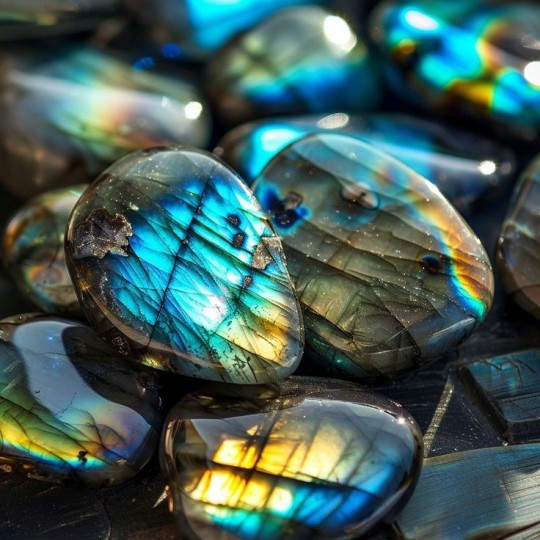
Labradorite is a semi-precious feldspar mineral known for its exquisite iridenscence. It is characterized by vibrant flashes of color, which ranges from deep blues and greens, to vivid purples and pinks, to fiery oranges and golds. The enchanting play of colors in labradorite has a scientific explanation that's as fascinating as the stone itself. It's known to exhibit 'labradorescence', a phenomenon that occurs as a result of the stone's unique internal structure and the interference of light.
Labradorite's mineral composition primarily consists of a type of feldspar called anorthosite. What makes this feldspar so distinct is its lamellar structure. Within these layers, there are thin, closely spaced structures that act as barriers to the passage of light. When light enters a labradorite stone, it interacts with these structures in patterns that are necessarily parallel, producing is distinctive flashes of color, the striking display that labradorite is renowned for.
The colors produced by labradorite are not due to pigments within the stone, but rather the dispersion of light. This is similar to the way a prism splits light into its various colors. As a result, the hues in labradorite can shift and change as you view it from different angles, giving it a dynamic and captivating quality.
Understanding the science behind labradorite's iridenscence adds another layer of appreciation for this otherworldly gemstone. It's a testament to the marvels of nature and how it can create something so aesthetically stunning and intriguingly mystifying.

History
Labradorite boasts a history as enchanting as its radiant colors. While it earned its name from the Canadian province of Labrador, where it was first officially documented in the late 18th century, its roots in human culture run deep. The discovery of labradorite was a moment of awr and wonder, as early observers were captivated by the stone's iridescent flashes. However its use and significance extend far beyond its namesake region.
In ancient cultures, labradorite was considered a magickal stone with connections to the unseen world. Inuit tribes who inhabited the region where labradorite was initially found, revered it as the powerful stone that captured the Northern Lights, trapping them within its depths. The association with the Aurora Borealis gave labradorite a sacred status among Indigenous people.
As time progressed, labradorite began to make its way into other cultures' spiritual practices and traditions. It was prized by shamans and mystics for its metaphysical benefits, healing potential, and ability to enhance one's spiritual connection and insight. Labradorite was often used for divination, channeling, spirit work, crossing the veil, and more, believed to bring about a deep understanding of the Universe, spirit, and the inner self.
Labradorite's history also intersects with the world of art and jewelry. Artisans and jewelry designers recognized its captivating beauty and incorporated it into various creations. The stone was believed to ignite divine creativity in those who worked with it.
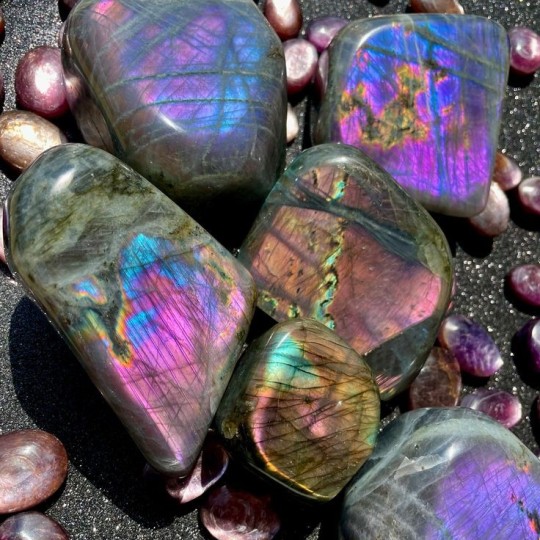
Metaphysical Uses
Labradorite is more than just a stunning gem; it is also revered for its metaphysical properties, making it a beloved stone among mystics and those who delve into spiritual realms. These profound effects include:
• Enhanced intuition and psychic abilities- One of the most commonly attributed labradorite traits is its ability to open the Third Eye, honing one's intuition and enabling psychic ability. It is referred to as the "Stone of Magick" or the "Stone of Transformation" due to the profound experiences it can facilitate. Labradorite opens the doors to unseen realms beyond perception enabling individuals to tap into internal and external sources of wisdom to gain insights far beyond the ordinary. For those who practice psychic readings, divination, meditation, astral travel, or any kind of spirit work, labradorite makes a valuable companion. It heightens spiritual awareness, amplifies inner knowing, and aids in past life recall. This improved intuition can aid in decision making, problem solving, and understanding complex situations.
• Spiritual transformation- Labradorite is regarded as a profound catalyst for spiritual transformation and growth. It supports individuals on their spiritual journeys by deepening their connection to higher realms and expanding their spiritual awareness. This expansion can lead to profound personal and spiritual transformation. Labradorite's energy encourages introspection, inner exploration, and a heightened sense of purpose. Those who work with this magickal stone become intuned to the subtle energies of the Universe, inspiring a sense of wonder and creativity and curiosity regarding the mysteries of existence, motivating them to seek a deeper understanding of their own soul. It is a guiding light on the path of spiritual enlightenment.
• Increased synchronicity- Labradorite holds a fascinating connection to the concept of synchronicity, the occurrence of meaningful coincidences in our lives. It acts as a beacon for recognizing and interpreting these important events, offering a deep understanding of the interconnectedness of the Universe.
• Protection and aura cleansing- Labradorite is also associated with protection. It creates a shield around the aura, the energetic field that surrounds the body. This shield acts as a barrier, warding off negative or unwanted energies and influences. Furthermore, labradorite cleanses and purifies the aura of these attachments, restoring a sense of balance and harmony.
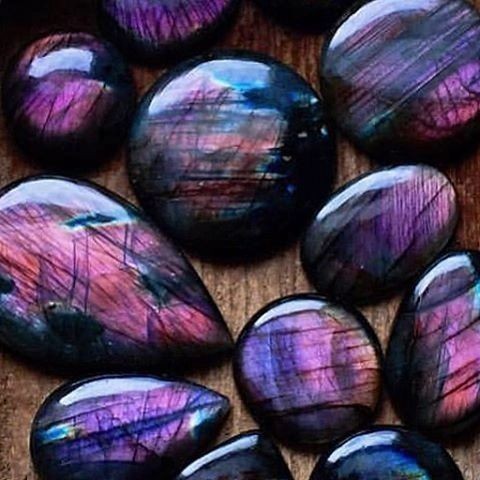
• Inspiration and artistic expression- For artists abd creatives, labradorite is a wellspring of inspiration. Its fluid energy encourages thinking outside the box and pushing the boundaries of conventional ideas. The transitioning hues within this beautiful stone evoke a sense of enchantment and wonder, igniting one's imagination and boosting creative ability.
• Relationship harmony- Labradorite is associated with fostering relationship harmony by nurturing understanding, empathy, and effective communication between people. Its energy creates an atmosphere of openness and emotional connection, which helps resolve conflicts and strengthen bonds in any type of relationship.
• Confidence and communication- Another remarkable facet of labradorite is its potential to boost self-confidence and improve communication. When you harness the energy of this stone, it empowers you to express your thoughts and ideas with clarity and conviction.
• Focus- Labradorite is a valuable tool for those seeking to elevate their focus and concentration levels. The enchanting gem clears mental fog and grants clarity making it easier to engage in tasks that require undivided attention. It assists in sharpening your mental faculties, allowing for more precise and sound decision making.
Characteristics
Hardness: 6-6.5
Mineral family: Feldspar
Crystal system: Triclinic
Sun safe: Yes
Water safe: No
Correspondences
Planet: Uranus, Moon, Neptune
Element: Air, water
Zodiac: Aquarius, Sagittarius, Scorpio
Chakra: Third Eye, Crown, Throat
Numerology: 6, 9
Herbs: Lotus, mugwort, frankincense, sage, lavender, morning glory, eyebright

"A man is like a bit of Labrador spar, which has no luster as you turn it in your hand, until you come to a particular angle; then it shows deep and beautiful colors."
-Ralph Waldo Emerson
#witch#magick#witchcraft#crystals#crystal witch#crystal healing#labradorite#metaphysical#meditation#divination#spell work#spellwork#spellcasting#occult#occulltism#occultism#satanic witch#chaos witch#eclectic witch#eclectic#pagan#witchblr#witch community#lefthandpath#dark
119 notes
·
View notes
Text
Druids, Shamans, Monks, and Naturalists: The Distinction of Nature Magic Users in Warcraft
As a Druid roleplayer I run into this question a lot “why can’t my mage be a druid?” “Why can’t x be a druid?” To be honest I get it. The distinction between nature magic users in the universe of Warcraft (Naturalists/Green Mages, Shamans, Monks, and Druids) can be extremely confusing especially when they also have a lot of overlap and no clear canon guides like most TTRPGs do. It can feel like you are getting a “No” with a confusing explanation behind it. As you dive into each of these versions of Nature magic users there is a clear distinction between them. Once broken down it comes down to two things 1)How you get your power and 2) what goal your character has/what goal they serve.
Shamans The main goal of Shamans is to bring harmony to the elements and to serve as spiritual leaders in their communities. This is done through the use of totems and the elements of Spirit or Decay to commune with the Elements or bind them to servitude and access the Elemental Plane. It’s likely through this bond with Spirit that they are able to transform into a ghost wolf and access other planes of existence to commune with their ancestors.
Their distinct traits are the following: Goal: Creating harmony or disharmony with the Elements and Spirits Source of Power: Using totems or Spirit/Decay to commune with or bind the Elements and tap into the Elemental Planes, or commune with the spirits of the land or their ancestors.
Monks Monks are the masters of Chi or their inner Spirit and the self, making their journey a very personal one outside the bounds of say protecting Pandaria. Receiving boons from the August Celestials, which are Wild Gods and bound to the Dream, may give them some access to the flowing spirit of the Emerald Dream and lead to the appearance of their magic being a Jade/Emerald color. There is some evidence to support that the Dream is “near’ in Pandaria based on the Faerie Dragon Sprites in the Jade Forest which are a clear sign of the Dream being “near” and the rare encounter Nuoberon in the 10.2 Dream patch where a Pandaren child dreams up wild things into existence in the Dream.
Their distinct traits are the following: Goal: Creating harmony and balance with your inner spirit and mastering the self. Source of Power: Chi, the mastery of the self and inner spirit, the August Celestials/Wild Gods/Loa, and possibly the Emerald Dream (see Jade Forest).
Naturalists/Nature Magic Users Some of our best examples of Naturalists come from the Valewalkers, Naturalists in Suramar, the High Botanist Tel’arn, and Shen’dralar Milicent Serene and her Naturalist experiments. From the High Botantist Tel’arn we learn that his power is achieved through the use of Arcane, Light, and Nature which also lines up with what we’ve learned in Palawltar’s Codex of Dimensional Structure that magics anchored to one or more magic types makes them more stable. Everything done by Naturalists seems to be through standard mage/arcane means through their more Orderly understanding of magic.
Their distinct traits are the following: Goal: Entirely up to the user. In some cases it is mastery of the art, seeking knowledge, or experimentation. Source of Power: Everything is through Knowledge of Order magic/Arcane and tethering one or more magic types like Light and Arcane.
Druids These shapeshifters are caretakers of the wilds. They have strong bonds with the Wild Gods/Loa, Nature, and the Dream. All of the cultures that practice Druidism are bound to the Wild Gods in some way through worship or curses. One of their main tenets is to maintain the balance, a delicate equilibrium of the cycle of life and death. All of the current races that can play as them have extremely close ties with the Earth, the Dream, or the Wild Gods/Loa. Even the Drust, which at first seems to be an outlier, are connected to the Dream and Thros, the Blighted Lands. Much like how the afflicted of Gilneas were able to learn how to become Druids because of their previous knowledge of “the Old Ways” after essentially being bound to the Wild God, Goldrinn, and there by the Dream via the Worgen curse, so too are the Kul Tiran Thornspeakers through their same Gilnean understanding of the Old Ways and their bloodline connection to the Drust and Thros. Their distinct traits are the following: Goal: Maintaining the balance of nature and the cycle of life. Source of Power: Connections to the Wild Gods/Loa, the Emerald Dream, and the Spirit of the land (see previous posts on Spirit magic in nature).
Overlap and Distinctions As we can see many of these classes have some overlap in a few areas.
Connections to the Dream and Wild Gods Both Monks and Druids have varying degrees of connections to Wild Gods and the Dream. While a Monk is not as directly tied to the Wild Gods and the Dream like Druids, they are present forces in one way or another in Pandaria. The distinction between these two classes then is in how they access their power and their goals.
A Monk while possibly influenced by or receiving boons from an August Celestial (Wild God/Loa) and the Dream does not directly gain their power from them like a Druid, rather it is from the harmony and balance of their own spirit. Another example of this is the Zandalari; their racial allows for boons/buffs from the Loa, but this does not make all of them Druids. The goals of Monks reflect this as they appear to be personal ones or aiding the personal goals of their people or others. In contrast the goals of Druids is specifically in maintaining the balance of nature and the cycle of life.
Shapeshifting Ability Both Shaman and Druids have some sort of shapeshifting ability in game, however, one is incorporeal and the other physical. The Shaman ability then might be a transformation of their body into pure Spirit as is not bound to any specific Wild God, more of a manifestation of one’s spirit like with Wild Shape in Ardenweald. Whereas Druids after being bound to a specific Wild God/Loa are able to take on the physical form of spirit they are bound to or hold a totem or relic of.
Use of Arcane and Light Druids and Mages both use forms of Nature, Arcane, and Light magic. As discussed before, Mages approach to Nature magic is through the lens of Order magic and the Arcane. Druids still use the Arcane in some Balance spec spells, but it is distinctly named “Astral magic” which is defined as a combination of Nature and Arcane. We can assume then that Druids are accessing Arcane magic through the pathways of Nature, similar to how Sunwalkers (tauren paladins) access the Light through their devotion to An’she.
Connections to Spirit and Decay Druids, Monks, and Shamans all share a connection with the element of Spirit and their “darker” counterparts inversely with Decay.
The easiest way to think about these connections to the element of Spirit and Decay is based on the class - Monks are in tune with their own inner Spirit or Decay, Shamans are in tune with the Spirit and Decay linked to the Elements, and Druids are in tune with the Spirit and Decay linked to nature and wildlife.
Monks very clearly have a link to Spirit through their use of Chi. The inverse of this and their manifestation of Decay may be the Sha which has ties to the Old Gods and possibly madness (see my previous post on The Nature of Memory Magic). Shamans are easy as well since Spirit is one of the elements and Shamans may use it to commune with the elements and access the Elemental Planes and Dark Shamans use Decay to bind and enslave them. Druids also have access to the element of Spirit through its flow through nature and the Emerald Dream (see my previous post on The Nature of Memory Magic). Obviously for life to be in balance Druids must walk a fine line between Spirit and Decay, but out of control Decay in Druidism presents as the Nightmare and Thros/the Drust. You could also make the argument that the Druids of the Flame is Spirit out of control, but that’s for another paper on another day.
A quick little fun addon after my exploration of teleportation, memory, and Spirit in my previous post on The Nature of Memory Magic, this connection to this element of Spirit may explain how Monks are able to cast Zen Pilgrimage, Shamans are able to Astral Recall, and Druids are able to cast Dreamwalking.
All of this lines up with what we recently found in Palawltar’s Codex of Dimensional Structure. Each one of these classes have their connection to Spirit, Decay, and Nature magic, but they are all from different pathways to access that power. Once again proving that it’s how the magic is acquired that makes you one of these classes in a similar way to Clerics, Sorcerers, Wizards, and Warlocks in D&D 5e.
I hope this exploration of how these four nature magic users are distinct and how they intersect is helpful to you. Aside from the workload of making a bunch of new assets for Druids to be available to all races it seems to me that there is a need for a culture to have some sort of deep connection to the Dream or Wild Gods/Loa for them to access that ability. I do find it interesting that Druidism only seems to occur on Azeroth. We do see Shamanism on both Draenor and Argus, but curiously no form of Druidism. It seems that only the native races of Azeroth (Tauren, Trolls, and subsequently Night Elves) and those cursed to be bound to the Dream or Wild Gods (the Drust and Gilneans) have access to this ability. Races that are alien to Azeroth, descendants from Titan constructs afflicted by the “curse of flesh,” or those that were altered by Order (the High Elves and Nightborne) all lack this ability or pathway to Druidism. I’m interested to see if Blizzard ever explores this, perhaps in future patches with Elun’ahir and the Harronir. If and when they do I’ll be fervently exploring the topic. The Nature of Memory Magic As always my intention is never to police the roleplay of others, but rather to provide more canon centered explanations for those interested
#warcraft#world of warcraft#wow rp#moon guard#dnd druid#wow druid#druid#shaman#monk#wow shaman#wow monk#Naturalist Mage#roleplay#wow roleplay#wow lore
118 notes
·
View notes
Text
HC: What if Vertin is actually less human presenting but it's harder to tell because of her suit?
For example, there are a lot of human passing arcanists like Sonetto, Matilda, Melania, etc. Then there are arcanists like Shamane and Pavia where you see them reveal inhuman qualities at Insight II. Even further down the line you have Getian and Jessica. Arcanists vary so much in shape and size (not unlike humans tbh who also have a lot of variation among our species).
Here is what I conjured up:
Vertin's Silver/gray hair and eyes have a reflective quality to them so they reflect the color of things around them. This would also explain the inconsistencies in her hair/eye color. Her hat reduces the effect since it covers her head and she usually hides on eye. This way humans don't freak out as their talking by then changing color due to changes in light around them. You'd also end up staring at your own reflection in her eyes if you stare too hard.
If you could take a mirror and weave it into threads, that's Vertin's hair. Eyes have similar effect, they're like pools of liquid mercury.
Vertin might be able navigate through dark caves, labyrinths, and streets at night because she has a better night-vision than most. If you shine a light on her in the dark, her eyes do a that thing where they light up a like a cats. Just Sonetto lighting up the kitchen with her wand and Vertin's there nomming Picrasma candy like a naughty cat who got into the treat jar.
Then what about her suit? Maybe Vertin can temperature regulate like Sonetto, AEB her crossing the dessert in it, but she's sensitive to sun? The actual UV is bad for her skin if she's out there too long. Also her hair color is not good for protection either since she has negative melanin (this would also go for her eyes and be another reason for hat).
Or you could go further off the deep end. Embrace the arcanists blood!
What if Vertin barely even has body hair so she's more vulnerable if she doesn't cover up? What if you can see arcane shenanigans under her skin so she covers it up in public? Like her veins being a weird color instead of the blue-green humans are used too. Or maybe it's her overall body type in general?
Sonetto's parade uniform is shows off more skin. The Foundation...knows that she's pretty. They know what they're doing. There was even a trail about them using pretty girls as a distraction toward the beginning of the game. While her normal uniform covers up everything, the Foundation can make exceptions.
So what if Vertin's body doesn't conform to what humanity accepts? She has a lot of androgynous features and a lot of humans we see in-game like to put things in boxes. However, there's no box for people like Vertin who show a mixture of masculine and feminine features (although we see a more than few arcanists carry these traits). Because the Foundation wants humans to feel comfortable with arcanists, it's easier to only show off things they'll accept and quietly tuck away the things that they might not be as open too. Now that Vertin isn't a little kid anymore, those contradictory features are going to be more obvious. While Vertin is free to pick her own outfits, the stigma is still there. It actually gets worse with each Storm too.
In a world like that it might be easier to navigate to cover up as much as possible so people don't have time to dwell on what you look like underneath. Perhaps arcanists don't have that same obsession of what's going on underneath other people's clothes but they are subjected to it.
What if arcanists react to the full moon? Pavia needs to howl at it. Sonetto gets restless. Druvis NEEDS to bask in it and won't be interrupted. Then how does Vertin react? Turning into an Udimo? Big naps? Or she doesn't sleep at all. She becomes a menace! Becomes super strong! Or just lays on the floor and cries.
I forgot where I was going with this but here we are.
Embrace the arcanist blood and give me your "arcanist Vertins"! I will consume.
136 notes
·
View notes
Text
I’ve been hearing from a lot of places that people who disliked season 3 “don’t understand” that the show is an allegory or that they are “media illiterate”. The specific viewpoint I am talking about here in this post is going to be that “because the show is an allegory, the characters aren’t meant to be developed as much and western audiences don’t understand that.” I strongly disagree in the context of squid game. I have a video I watched saying this if anyone needs the link lemme know, its why I made this post.
Its a genuine point you can make about the show that every character represents a potential type of person in Korea. Gi-hun is a divorced gambler. Sang-woo went to SNU yet has a lot of debt. The codependent mother and son. Hyun-ju is transgender. Sae-byeok and No-eul are both from North Korea and in debt trying to save their loved ones. In-ho was an ex-police officer. I could name more, but the reasons all these people got involved in the games was because of their debt. I won’t dispute the value these traits bring to the overall allegory, of course not! It is very true that the reason different types of people were included is to shed light on the debt issues of Korean people. It’s extremely valuable that different kinds of people are included in the story, and therefore how different types of people in Korea are affected by capitalism. That is the allegory. A major part of it.
BUT, in my opinion, not at all a valid reason to say “oh that’s why things weren’t explained in season 3, that’s why many characters feel flat!”. Like yes Gi-hun was and is a gambler, yeah Hyun-ju is trans, yes the mother and the son are codependent, etc but the director CLEARLYYY wrote them as more than just that! Gi-hun shows change and regret. Hyunju is caring and loyal. Ali is very kind, likes movies, and is a very trusting person. None of their personality traits are stereotypes, they are all different!
They all have the same thing in common, they were or are in debt thats true. But not explaining crucial plot points and leaving major character arcs unresloved/ruined shouldn’t be given the excuse of being for the “allegory”, because why would you make the characters nuanced in the first place? If not to show that everyone is a human and a victim of the games?? Even In-ho, who is the Front Man, has an arc that feels like it should have lead somewhere. It can be inferred that he misses his wife and brother. He still shows human emotions! So why, for what reason, were all of these people built up this way? They don’t seem like caricatures to me.
Making everyone a flat character was not hdhs intention clearly in season 2, and I’m honestly done defending the butchered character arcs with the excuse of allegory. At this point, this makes me feel like people think he should never have given someone like In-ho any character development at all. And I’m sure he did consider it looking at how season 3 turned out.
Let’s take at a famous piece of media that is an obvious allegory, Animal Farm. I feel like the characters in that were much more flat and unexplored, compared to squid game. And it did work! But you have to remember squid game was never really like that. Consistency matters.
Tbh, if what they wanted was to show the doomed system of capitalism and its effect on lots of indebted people in Korea, using flat “caricatures” wouldn’t have even worked imo. After all you need to remember the show is an allegory for capitalism and explores the possibilities of human nature, aka, also how HUMANS built up capitalism and everyone who is affected by it is human.
Most squid game characters are not flat. They aren’t really stereotypes, and their arcs should have been respected, including, especially In-ho’s and Gi-hun’s. And yeah man some characters were less developed and left as symbols, or even just another example of a person, but that’s okay too?? Yeah the baby is a sign of hope and doesn’t have a personality yet and shaman Seon-nyeo does not change much, but thats totally fine to have in the show too besides the main characters! It’s actually good to have that!
However no answers does not equal a good allegory that “keeps you thinking”! And yes media with allegory can have developed characters!
Justice for Gi-hun and In-ho’s moral battle that was basically forgotten in season 3 🥀
Also, side note people can understand the symbolism in media and still be critical of it. Like yes we understood the meaning but we also deserved consistency and answers, having an opinion is okay. Please don’t misinterpret this post as hating you if you liked season 3. I just wanted to share what I think. Here on tumblr from what I have seen everybody is really respectful and understanding though! 🩷🩷
#squid game season 3#squid game#squid game spoilers#squid game critical#yapping 5ever sorry#I’m just very passionate about this#inhun#hwang in ho#seong gi hun#Cho hyun ju#squid game analysis#also if you disagree i’m happy to listen to other opinions#my mind can always be changed#so please don’t hate me for this
28 notes
·
View notes
Text
(HEADCANONS) Mudokon Queens and Feathers

While Mudokon Workers and Drones are known for having a rainbow variety of feathers, Queens on the other hand have a much smaller but exclusive array.
Feather colouration is an evolutionary trait Mudokons have possessed for their entire existence. Workers and Drones possess wide varieties of feathers in order to impress queens, while queens tend to remain more stationary.
Grey is a natural colour of Queen feathers. Despite what a lot of people suspect, the colour of Mudokon feathers has nothing to do with age at all. A lot of Shamans tend to have grey feathers, causing a stereotype among other species that elder Mudokons have Grey feathers. In reality, a lot of infertile queens end up choosing a shamanistic lifestyle in adulthood as they cannot aide their tribes by producing eggs. Queens are known to dye their feathers (with natural dyes made from fruits and flowers) many vibrant colours, and sometimes even dye patterns into them mimicking tribal symbols. The perks of grey feathers is that when dyed, they are much more colorful than naturally coloured worker/drone feathers.
Brown feathers are another rarity that only Queen Mudokons possess. Brown feathers only reallt appear when Queens reach adulthood, as they are biologically a sign that a Queen is ready to accept Drones. They aren't an invitation however, and the Queen can have brown feathers for a long time before she is personally ready to accept drones. Some grey-feathered Queens in more industrial environments dye their feathers brown to appear more appealing. Some cosmetics companies sell a feather dye to make grey feathers look a natural brown. The dye is incredibly harmful to Mudokon skin, but the obsession with appearance that has been forced on a lot of Mudokons is very real.
Unnaturally de-sexed Queens are relatively monomorphic compared to workers, and do not always grow normal Queen feathers during puberty. An interesting phenomenon has been found in which queens introduced to unnatural sterilization chemicals before sexual development (spaying and such) will cause the growth of "Worker" coloured feathers as opposed to brown or grey. This phenomenon only occurs if a Queen is spayed at a young age, when adult feathers have not grown in yet. Queens that are naturally infertile do not possess the monomorphic gene, and have the natural grey or brown feathers as Queens do.
34 notes
·
View notes
Text
*shakes post like bag of cat treats*
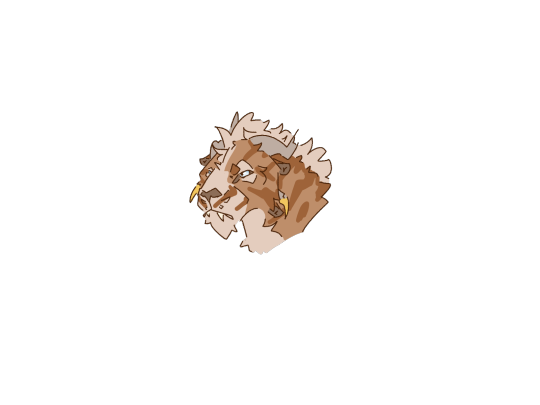
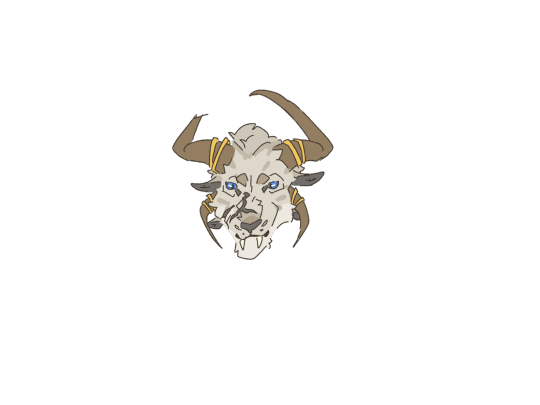
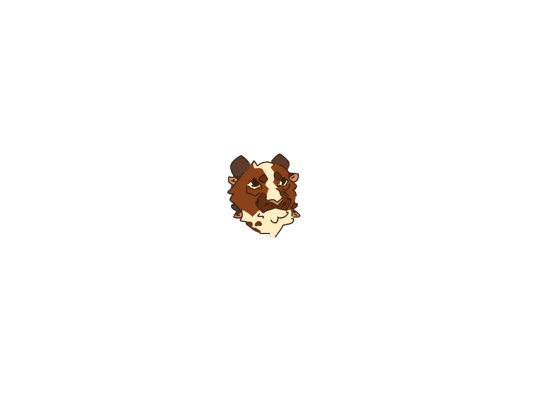
I have more of them! Euryale gets the spiky treatment she deserves, also I hc that flame legion has some older traits compared to the other legions, and I've given Euryale the sorcerous shaman guy (forktail?) as a sire, so she gets a kinda sabertooth-esque longer face! Ashbringer is a lot bigger than the main cast, and the second oldest. (Hirrus is the old guy of the group lol) Would've given her the revenant bandanna but there was no room T-T and lastly. olskin. my baby boy. one of my friends suggested i make him younger so the timeline fits better and now he's just. so tiny. just a little guy. (also since i forgot to actually put my artfight in the last post it's Best_Snek)
#charr#gw2#gw2 charr#guild wars 2#the spine warband#euryale squallspine#ashbringer the sly#olskin blightspine#artfight
26 notes
·
View notes
Text
ꉣꋪꀤꂵꉣꀤꈤꍟ ꓄ꋪꍟꍟꌗ
PrimPine Trees are colossal, frost-hardy conifers resembling ancient redwoods, their silvery bark and blue-green needles dominating Howa’ah’s most inhospitable landscapes. These titans are ecological keystones, their deep-rooted resilience shaping both the physical and mystical fabric of the frozen realm.
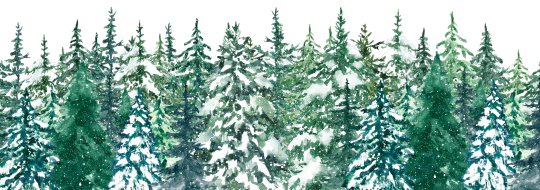
Habitat & Distribution:
Regions: Thrive in three key areas:
The Glacial Abyss: Form dense, mist-shrouded forests where roots pierce permafrost.
Dragon’s Spined Mountains: Cling to jagged peaks, their roots anchoring against avalanches.
Weeper’s Cove: Grow along icy coastal cliffs, salt-resistant and battered by glacial winds.
Adaptations: Jutting, ice-veined roots absorb scarce nutrients; silvery bark reflects sunlight to prevent thaw stress; blue-green needles trap faint winter light for year-round photosynthesis.
Physical Traits:
Bark: Thick, metallic silver with a pearlescent sheen, scarred by centuries of storms and claw marks from megafauna.
Needles: Serrated blue-green clusters that hum faintly in high winds, producing an eerie “forest song.”
Roots: Aboveground roots form labyrinthine arches, creating shelters for fauna and travelers.
Ecological Role & Symbiosis: PrimPine forests sustain Howa’ah’s most iconic (and deadly) fauna:
Valraxies (FrostFang Leviathans): Serpentine drakes nest in hollowed trunks, their icy breath crystallizing sap into protective armor for the trees.
Black-Backed Wolf Drakes: Pack hunters den in root cavities, using needle-covered trails to ambush prey.
Melze Phiko (Terror Guardians): Semi-sentient, lichen-coated beasts merge with trunks, attacking intruders to protect the forest.
Balladeer: Avian mimics roost in branches, echoing forest sounds to disorient predators.
Frost Bison: Scrape ice from roots to access nutrient-rich moss; their trampling spreads PrimPine seeds.
Hawthorn Wyverns: Seed dispersers that nest in canopies, immune to the needles’ resinous toxins.
Magical Properties:
Frozen Mana Channels: Roots tap into subterranean icy mana veins, infusing sap with protective magic.
Draconic Resonance: Valraxies’ presence imbues groves with primal frost magic, causing rare “Icebloom” events where trees sprout crystalline flowers.
Soulwood Myth: Shamans claim ancient PrimPines absorb the memories of the dead, their whispers guiding frosthunters like Cara through blizzards.
ꉣꋪꀤꂵꉣꀤꈤꍟ ꌗꍏꉣ
PrimPine Sap is a mystical, golden resin harvested from the PrimPine, a towering frost-hardy conifer with silvery bark and blue-green needles. Renowned for its adaptability to Howa’ah’s coldest realms, the sap hardens into translucent amber-like resin studded with icy flecks—a visual hallmark of its magical cold resistance.

Habitat & Growth:
Regions: Dominates Howa’ah’s Glacial Abyss, frozen tundras, and pine forests.
Tree Traits: Silvery bark insulates against freezing temps; deep roots anchor into icy soils; blue-green needles photosynthesize under low light.
Physical Traits:
Fresh Sap: Viscous, golden liquid with faint shimmer.
Cured Resin: Translucent amber hue with icy flecks, brittle yet slightly pliable.
Flavor: Bitter, resinous tang softened by a whisper of sweetness (enhanced when boiled).
Harvesting & Preparation:
Method: Bark is scored with blades (like pine tapping), sap collected in clay pots or hollowed ice gourds to preserve purity.
Curing: Exposure to air hardens sap into resin within hours; often boiled into syrup or molded into chewable nuggets.
Serving: ~20 grams (1 tbsp liquid) per use—compact for survivalists like Cara.
Magical Properties:
Frozen Mana: Infused with Howa’ah’s ambient icy magic, granting mild cold resistance when consumed or applied.
Draconic Essence: Some shamans claim traces of Frostfang Leviathan��influence (e.g., Valraxies) linger in the sap, linking it to ancient glacial guardians.
Ritual Use: Amber resin carved into charms for frost protection or burned in ceremonies to commune with tundra spirits.
Culinary & Practical Uses:
Raw/Cooked: Drizzled over game meats, stirred into teas for warmth, or boiled into syrup to sweeten bitter brews.
Resin Nuggets: Chewed for sustained energy during hunts; numbs mild frostbite.
Preservation: Coats tools/weapons to prevent ice damage; seals wounds as a rudimentary antiseptic.
Fire: It is flammable.
#w0e's at it again#w0e's musings#headcanons#creative writing#writing#lore drop#botanical life of Howa'ah
18 notes
·
View notes
Text

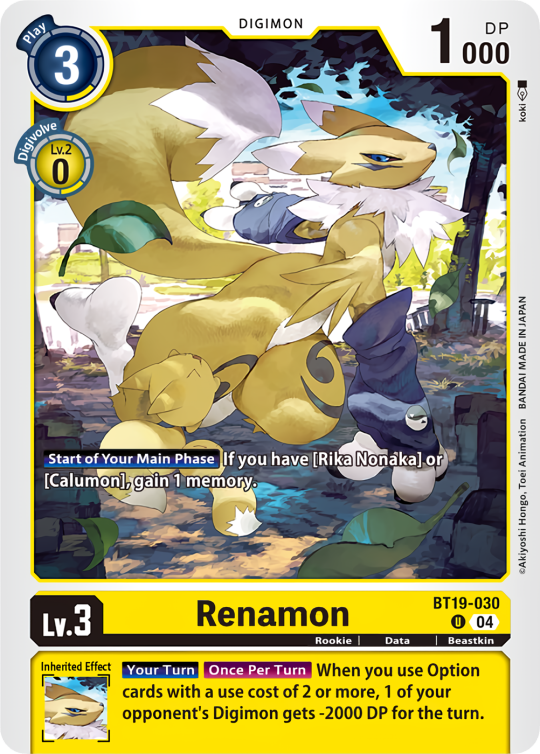



Rika Nonaka BT19-083, Renamon BT19-030, Kyubimon BT19-034, Taomon Ace BT19-037, Sakuyamon BT19-040 by koki from BT-19: Booster Xros Evolution (BT19-20: Special Booster Ver.2.5)
#digimon#digimon tcg#digimon card game#DCG#デジカ#digica#digisafe#Rika Nonaka#Ruki Makino#BT19#Renamon#Kyubimon#Taomon#Sakuyamon#ace digimon#koki#digimon card#color: yellow#Lv3#Lv4#Lv5#Lv6#type: data#trait: beastkin#trait: mysterious beast#trait: wizard#trait: shaman#trait: god man#num: 04
348 notes
·
View notes
Text
I remember when I was 14 or so and I ended up wanting to use a character in a campaign that was latino, and I was curious about the possibilities within different popular TTRPGs. I sent a few messages on forums about it, and the majority of the answers were variants of:
1. Don't worry! Thankfully the most recent edition introduced an updated Portuspainia!
2. The 2nd edition has the Savage Junglelands, perfect for making *checks notes* a chaotic evil jaguar shaman. The groups here have traits like Good Warrior and... Yea They're Real Good At Fighting
3. There's actually a race of glorbie gleebies that act exactly like mexican ranchers for no reason, why not go with that? Also they're a warrior group again yea sorry.
4. Why would you want to play as a latino in a fantasy setting. It's supposed to be in medieval Europe, and that's not accurate?? Anyways here's my half elf character wearing late renaissance period clothing.
5. You know about Portuspainia right? It's gotten tons of updates over the years and is 10 times more fleshed out than any other of these options. Hope this helps!
23 notes
·
View notes
Text
The Role Of Hermits

Hermits have long been revered in witchcraft, mysticism, and occult traditions for their roles as seekers of wisdom, spiritual protectors, and keepers of ancient knowledge. The hermit archetype embodies solitude, introspection, and the pursuit of hidden truths. In witchcraft, hermits play a unique role in personal transformation, spiritual guidance, and deep magickal work.
The Archetype of the Hermit in Witchcraft
In many traditions, the hermit is a symbol of wisdom, seclusion, and enlightenment. This is reflected in the Tarot card "The Hermit", which represents introspection, seeking truth, and following an inner light.
Core Traits of the Witch-Hermit:
• Lives in solitude or remote areas (forests, mountains, caves, or secluded homes)
• Devotes time to spiritual study, meditation, and deep magickal practice
• Acts as a guardian of hidden knowledge
• Connects with nature, spirits, and unseen forces
• Often avoids mainstream society, preferring independence

The Hermit as a Guardian of Esoteric Knowledge
Hermits in witchcraft are often seen as keepers of magickal traditions, preserving rituals, herbal knowledge, and lost wisdom. Many folk healers, cunning folk, and wise women historically lived on the edges of society, practicing their craft in seclusion.
Types of Hermit Witches:
• The Forest Witch – Lives deep in the woods, working with plants, spirits, and animals.
• The Solitary Alchemist – Devotes life to philosophy, transformation, and secret experiments.
• The Spirit Walker – Isolated to commune with spirits, ancestors, or astral beings.
• The Prophetic Seer – Uses solitude to enhance visions, divination, and trance work.
• The Temple Keeper – Protects sacred sites, ruins, or hidden places of power.

The Role of Solitude in Witchcraft
Solitude is often essential in witchcraft and magickal development. Many witches embrace temporary or lifelong hermitage to:
• Strengthen their magical abilities – Uninterrupted practice leads to stronger energy work, intuition, and manifestation skills.
• Connect deeply with nature – The natural world provides wisdom, omens, and spiritual allies.
• Enhance psychic abilities – Silence and solitude heighten clairvoyance, dream work, and meditation.
• Undergo spiritual transformation – Many spiritual initiations require time away from society.

Hermits as Teachers and Guides
Though they live in isolation, hermits sometimes serve as mentors, healers, and initiators in witchcraft traditions. In folklore, many powerful witches and sorcerers live alone but help those seeking knowledge.
Examples of Hermit Teachers in Witchcraft & Folklore:
• The Crone in the Woods – An old witch living alone, offering wisdom, potions, or prophecies.
• The Hidden Master – An occultist who teaches only a select few dedicated students.
• The Shamanic Seer – A mystic who communes with spirits and offers guidance.

Modern Witchcraft & Hermit Practices
Many modern witches embrace hermit-like practices to deepen their craft, even if they do not fully withdraw from society.
Ways to Incorporate Hermit Wisdom into Your Practice:
• Solo Rituals & Spellwork – Dedicate time to private rituals, free from distractions.
• Retreats & Solitude – Spend time alone in nature or in a sacred space for spiritual renewal.
• Deep Study & Esoteric Learning – Read ancient texts, practice divination, and refine magickal techniques.
• Energy Work & Meditation – Strengthen intuition, astral travel, and communion with spirits.
• Avoiding Mundane Distractions – Limit exposure to social noise to focus on personal power.

The hermit is a powerful figure in witchcraft, representing wisdom, self-discovery, and mastery of the unseen. Whether you fully embrace solitude or periodically retreat for spiritual work, adopting the hermit’s path can unlock deeper magickal potential, connection with nature, and hidden knowledge.
#Hermit#Hermit witch#Hermit archetype#hermitcraft#witch#magick#witchcraft#witchblr#witch community#eclectic witch#eclectic#pagan#esoteric#esotericism#esoteric knowledge#occult#archetypes#lefthandpath#tarot#folklore#crone#Teacher#knowledge#solitude#solitary witch#solo#guidance#sacred places#Scholar#student
66 notes
·
View notes
Text
Writing Ojibwe Characters: A Basic Guide
Creating well-rounded, respectful Ojibwe characters takes a bit of research and consideration. This guide gives a quick overview of things to think about when writing Ojibwe people and incorporates some context to avoid common pitfalls. Writing any Indigenous character means approaching with care, so let’s dive in!

1. Understand Ojibwe Culture and Community
Get to know the basics of Ojibwe culture, beliefs, and values. My people, the Ojibwe (also spelled Ojibwa, Ojibway, or Chippewa) are part of the Anishinaabe people. We are present across Canada and the northern U.S. Midwest, with diverse communities that each have their own practices and perspectives.
Community-centered thinking: Many Ojibwe people have a strong sense of connection to community and family. Recognize that we tend to prioritize our connections and often have a deep relationship with our elders and youth.
Language and terminology: Use respectful terms. The Ojibwe language (Anishinaabemowin) is central to identity, even if a character doesn’t speak it fluently.
2. Avoid “Spiritual Mysticism” Stereotypes
Steer clear of clichés about Indigenous mysticism. Instead, focus on how Ojibwe spirituality is lived in everyday ways—whether through ceremonies like smudging, seasonal celebrations, or even just respecting the land and ancestors. Characters don’t need to be “shamans” or mystical guides to show their culture.
Spirituality in balance: While many Ojibwe people honor spirituality, each person practices differently. Just as in any culture, some may be very connected to it, while others are more secular.
3. Use Realistic Names and Nicknames
Ojibwe names often have meaning and are given in specific cultural contexts, sometimes in ceremonies or after significant events. If using an Ojibwe name, make sure it’s well-researched, and consider including a backstory on how it was given to your character.
Nicknames are common and can range from family names to personal traits. Think about nicknames that resonate with your character’s personality and family background rather than something “exotified.”
4. Research Traditional Roles, Not “Warrior” Stereotypes
Ojibwe people are often cast as “warriors” or “stoic fighters,” which is limiting. In reality, Ojibwe communities have had diverse roles throughout history, including diplomats, healers, artisans, teachers, and more.
Consider what makes sense for the time and place your character lives in—an Ojibwe character could be a modern-day artist, teacher, software developer, veteran, or lawyer. Complex portrayals highlight our adaptability and contemporary lives.
5. Acknowledge History Without Making Trauma the Focus
Many Indigenous communities, including Ojibwe, have endured hardships like colonization, boarding schools, and loss of land. However, it’s essential not to reduce characters to trauma alone. Show their resilience, joy, humor, and everyday experiences alongside their histories.
Avoid “tragic backstory syndrome”: A good character is multidimensional. Balance struggles with strengths, showing how they thrive in the modern world while honoring their roots.
6. Respect Language and Use It Thoughtfully
If your character speaks or knows Anishinaabemowin, use it respectfully and sparingly unless you're fluent. Small phrases or words can add depth without risking inaccuracies. If they use Ojibwe words, provide a translation for context.
Resource suggestion: Check out the Ojibwe People’s Dictionary for phrases, pronunciation, and examples of how the language fits into daily life.
7. Research and Connect With Indigenous Resources
For non-Indigenous writers, it’s important to engage with authentic sources and, if possible, speak with Ojibwe individuals or consult books, articles, or online resources created by Ojibwe authors and scholars.
Media to check out: Look for books, films, and articles by Ojibwe creators (such as works by Louise Erdrich or Gerald Vizenor) for direct perspectives.
8. Show Ojibwe Humor and Resilience
Ojibwe humor is a big part of the culture—often dry, sarcastic, and shared among family and friends. Including humor adds authenticity and breaks away from “stoic” stereotypes. Remember, we laugh, joke, and enjoy life as much as anyone else!
9. Give Credit and Respect Acknowledgments
Mention that you’ve researched Ojibwe culture and language if possible, and consider a small acknowledgment to the sources you used. It shows respect for our culture and the people who helped make the character accurate and relatable.
Sample Character Traits for Inspiration:
Joyful and witty, known for quick humor but deeply thoughtful.
Family-oriented, regularly calling or visiting relatives or helping out in the community.
Resourceful and resilient, finding creative ways to navigate the modern world while honoring traditional values.
Quietly proud, choosing to celebrate their heritage subtly but meaningfully, like wearing Ojibwe beadwork or carrying traditional items.
Writing an Ojibwe character respectfully and fully means creating someone real and complex. Remember, the best portrayals come from genuine understanding and thoughtful depiction. Happy writing, and Chi miigwech (thank you very much) for taking the time to represent us well! 🪶✨
And if you are ever confused, ask! I love answering questions about my culture!
29 notes
·
View notes
Note
https://youtu.be/h45S53Mgl7o?si=hNPa2ZTakKkf9Zmf
usually i don't watch these videos but i was tempted me to click on this and wow, sounded like op just explained Jimin. They said the person will have lots of feminine qualities and proceeded with 'her'. How JK will never engage in something which will jeopardize this relationship even if there are potential temptations out there for him and will rather take that energy out by doing some other high adrenaline sports. And will probably enter a marriage in 2033-37, around his 40 yrs. I've heard a korean shaman also mentioning the same, how there'll be a change in his career when he's around 40 where he'll also starts being a mentor for juniors. Maybe his own company in future...
Well, the description of the spouse didn't completely describe Jimin accurately even if he is a cancer rising tho so..but then you have the barnum effect everything can fit if you squint hard enough. The traits were all exaggerated here.
But the speculation to say he would marry around 40 would make sense.
I think if he takes the next step with Jimin whatever it might look like, it would be after the whole BTS thing/solo thing has calmed down a little, when he's ready to move on to focus more on his personal life which imo is not soon it will still take years.
These readings really are to be taken with a grain of salt. Speculating about future events even if written in charts is always tricky because people timeline jump all the time and not everyone is tied to planetary influences depending on how integrated with their higher selves they are.
The thing we know from Jungkook himself is that he's most likely going to have one person for life. Jimin is that special someone for him. He showed it's a done deal already in his mind. He's sure.
But of course any couple needs work and adjustements to endure on the long term, it's a never ending thing.
This man is so romantic, I don't think he would put into question his relationship and choose to work it out instead.
We all know Jimin is the more reasonable one, the one prone to doubts maybe sometimes, but even so I don't think he would jeopardize the relationship either. He loves Jungkook too much.
So really I remain hopeful that whatever obstacles come their way they will be able to surpass them together.
Jungkook being a mentor is a nice thought. His future self gives me daddy vibes already 😂 I would love to see him interact and teach juniors 🥺 I'm sure everybody would find him cool 💜
Who knows. Anything's possible.
I totally see him picking up random new hobbies and getting super invested in them for some reason 😂 Like slackline or woodcarving or miniature painting idk lol it would be so cute 🥺 he can be such a passionate guy
Whatever the future will be I have no doubt it will be bright for him 😌 and for them both together 💜 even more now after MS.
14 notes
·
View notes
Note
How's Hue's good old genetics? Would he be considered the first (or only) ena hybrid due to how he was made? Would explain why the Shaman asked the gods to forgive him before helping create little Hue
Still wondering if he ever got a body or is just floating/hopping around as a head lol
If he does have any Ena DNA in him, does he end up being a little bipolar? He has no sides to switch to but the irregular emotions might still run in him and show itself in ways that would be aligned with being bipolar 🤔
From what we've seen so far, Hue does appear to be the only hybrid in their known universe. Thanks to the ENA Laws this makes him a Criminal at Birth, since he's not able to be labeled as an ENA due to not harboring major ENA traits (as you mentioned with the side switching).
Hue does get a body at around age 9, making it easier for him to travel instead of just rolling around or being carried by mom. He loved to complain about it being embarrassing, then got mad when he was set onto the ground and told to roll.
As for being bipolar or showing signs, he does have issues regulating his emotions. His mothers never truly thought much of it (since being an ENA naturally, save for Hue's case, involves irregular emotional regulation), and just accept it as part of who he is. He isn't bothering anyone, so the family really doesn't see much need to worry.
9 notes
·
View notes
Text
Inami Master Post!!!
So, a long time ago I watched this little 2 season show on Netflix in the span of about a day. I was a kid that just really loves finding a series, watching all of it, then daydreaming about it for a little while. I had long since forgotten about it until a couple days ago, but when I looked into it appeared to be teetering on the edge of obscurity/lost media. I want to change that because this show means a lot to me and it needs more attention because it’s actually really good for late 2000s kids cartoons. I’d like to give a little introduction to kinda bridge the gap of Inami to potential fandom interest because it’s hard enough to even find this show on one’s own as it is.

Inami is a cartoon consisting of 26 episodes total divided into 2 seasons. It is a French show from 2008 (though some broadcasters bought the distribution rights and provided dubs of many other languages, including the English version on Netflix. This show was available as an English dub on Netflix up until around 2017. The show follows an 11 year old boy named Inami living in an Amazonian tribe and tackling the challenges of living in a jungle and sparing with the rival tribe.
Here are some of the main characters!
(Now bear with me here, the only versions of this series I could find to watch were in French, Russian, and Portuguese, which I then auto translated and cross referenced with what little information I could find about this show. Some of the spelling, character traits, or dynamics may be a little off, but I am relatively confident on my deductions provided below. If anyone has any better/further knowledge on this, please feel free to let me know as I will be more than happy to gain more information on this show!
First up: Inami himself!


Inami is the main character of the series; an 11-year-old boy dealing with a mix of cultural initiations, societal dilemmas, and challenges of living in the Amazon. He is very fervent and courageous, often putting himself in harm's way to do the right thing or help someone out of a tough spot. He can be a little hardheaded at times, but that just comes with being a little kid sometimes.
Shimiwe!


Shimiwe is another 11 year old boy inhabiting the same tribe. He is Inami’s best friend and often accompanies him on his exploits, however wary he may be against them. He differs from Inami in that he is far more level headed and thinks before he acts. This provides a nice dynamic where, when using both their heads, they are able to approach the same issue with different strategies to achieve the same result. Shimiwe is also sensitive to the spirit world and trains intermittently with the village Shaman to harness his abilities.
Animata!

Aminata is Inami’s younger sister. Every so often she is able to convince her brother to let her accompany him on his adventures, but when she can’t she plays a very convincing part in covering for his absence. This is especially helpful when Inami goes against the wishes of his peers in favor of his better judgement.
Xiomaro!


Xiomaro is Inami and Aminata’s father, and the chief of the Bellacaïbos tribe. He is a responsible and steadfast leader who does whatever he can to ensure the safety of his people, despite the many attempts to deceive his impartial disposition.
Minoska!


Minoska is the mother of Inami and Aminata, and the wife of Xiomaro. She, like her husband, does anything she can to ensure the welfare of her tribe and family. She tends to be a bit more level headed than her son and husband, preferring to wait for results because she relies on the nature of those around her to predict outcomes.
Hyaema!

Hyaema is an 11-year-old girl belonging to the rival tribe, The Patami, hereditary enemies of the Bellacaïbos tribe. She is Shimiwe's friend and Inami's love interest. Inami and Shimiwe will often visit her in private because knowledge of one of their own fraternizing with the enemy would cause the Patamis to declare all-out war on the Bellacaïbos. She balances out the dynamic between Shimiwe and Inami in being brave yet reserved; whatever the situation at hand calls for.
Pintos.

Pantos is the father of Shimiwe. He is often very selfish, scheming, and not very supportive of anything his son does. This could be due in part by the fact that his wife- Shimiwe's mother, drowned when his son was just a baby. Most of the time, when an episode features Pantos, he is seen concocting/abetting some kind of hair brained scheme to usurp the position of chief from Xiomaro with Morikas.
Carras! (My personal favorite)



Carras is the Bellacaïbos Shaman. He is extremely wise, patient, and capable. He communes with the spirit world or the God(s) Hekuras to interpret omens, predict disasters, protect the village, and guide Inami and his friends. Inside his hut is the totem of the Sacred Armadillo, a protective token representing connection and defense to the Bellacaïbos. He, and by extension, the totem are often targets of Morikas's envy/tricky schemes. I believe he is the older brother of Xiomaru/uncle of Aminata and Inami but I'm not entirely sure (if this is not in fact true then I'll claim it as a headcannon instead).
Morikas/Moricas!


Morikas is the Patami Shaman, and since there doesn't seem to be one, chief to the tribe as well. He is arrogant, foolhardy, and covetous, doing anything he can to steal glory for himself. Instead of focusing on his connection with the Hekuras or improving his abilities as a Shaman, he insists on unseating Carras and/or taking up the duties of both tribes' Shamans. He also tries to steal the Sacred Armadillo whenever the opportunity arises or strikes deals with Pantos to unseat Xiomaro and replace Carras. Usually, Morikas' schemes never come to fruition, and on the rare occasion that they do they are quickly thwarted by a Bellacaïbo or, every so often, a fellow Patami.
Horonami!

Horonami is the mother of Hyaema and allegedly a widow. She does her best to protect Hyaema, despite her insistence to sneak off with Shimiwe and Inami on perilous quests. Her love for her daughter often causes Horonami to go against the wishes of Morikas whether it is to save Hyaema or simply out of personal morality.
Fousiwe/Fousilwe!(???) (I have no idea. His name only auto translates to "rifle" in Portuguese, so I had to just go by what the characters said)

Fousilwe is a Patami boy that briefly served as Inami's rival due to his romantic interest in Hyaema. He is Morikas' nephew, and he usually appears to act under the paternal guidance of Morikas as a tool against the Bellacaïbos. (There is an episode where Morikas refers to Horonami by "daughter" though this must be a mistranslation referring to his position as the leader of the tribe. Otheriwise, this would therefore make Fousilwe and Hyaema cousins, which considering the romantic rivalry, is a little weird.)
Last but not least, Tatoon!


Tatoon is Inami's pet/double. A double is essentially a spirit animal, one soul sharing two bodies, that being Inami and Tatoon. She is very smart, humorous, and- much like her other half, a little stubborn at times. She often delivers messages to Hyaema or to Inami, she accompanies him on quests and keeps an eye on Inami and Shimiwe. Whenever Tatoon is hurt or poisoned, it hurts Inami as well, which is true of everyone's double/partner. Tatoon serves as a sort of connection to nature, and by extension, the magic that imbues it. (Tatoon and the other spirit doubles seem to exclusively be referred to as girls, so all doubles might be females? I'm not sure/could be another translation bug.)
#Inami#Inami cartoon#Inami 2008#Inami 2007#Bellacaïbos#Patamis#Xiomaro#Aminata#Hyaema#Carras#Pintos#Morikas#Minoska#Hekuras#Shimiwe#Fousilwe#Obscure fandom#Please look into this show its criminally underrated#This was so fun to make I love researching hyperfixations#Ask me anything about this I would love to answer!!!#This is probably the first time in history most of these tags have been used#crazy
12 notes
·
View notes